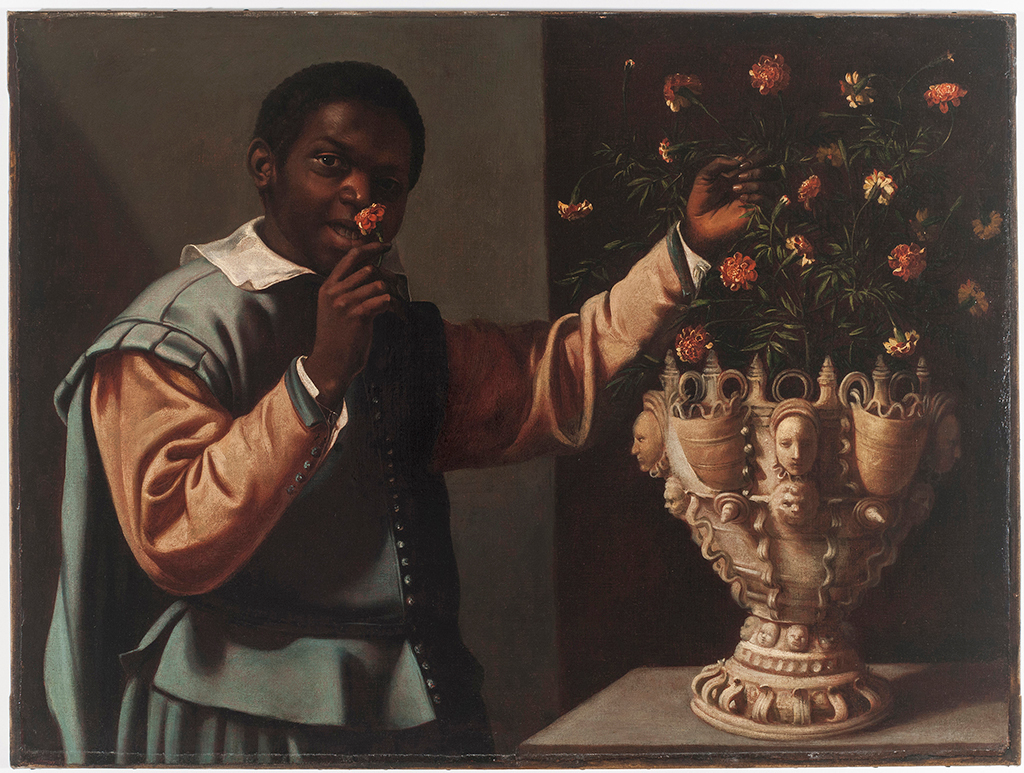
This painting of a young Black page has been previously attributed to both Tomás Yepes, a 17th century Spanish painter known for his still lifes of flowers in elaborate vases, and to a follower of Bartolomeo Passarotti, an Italian artist whose influence continued for decades after his death in 1592. The work’s authorship remains unknown, but the figure’s style of dress indicates a Spanish origin, as does the ornate ceramic flowerpot from which he pulls a flower to smell. This type of vessel known as an alfabeguer or alfabreguer (deriving for the Arabic word for basil al- ‘habac) was designed for growing basil and other herbs. The protruding pockets funneled water to the plant’s roots, allowing for easy watering. The style was imported to Spain from North Africa in the 14th century. It was subsequently manufactured in Spain, becoming a specialty of potters in Valencia.
The painting’s iconography is also a matter of dispute. The art historian Charles Sterling gave it its current title in 1981, interpreting it as one in a series of allegories of the five senses; however, no other canvases from such a series are known. Paintings of fashionably dressed Black servants alongside expensive and exotic furnishings became increasingly popular in Europe in the 17th century. Such images were status symbols intended to communicate their owner’s wealth and cosmopolitanism. Though the legal status of the young servant is not made obvious, he was likely an enslaved African child, as slavery was accepted and widely practiced in 17th century Spain.